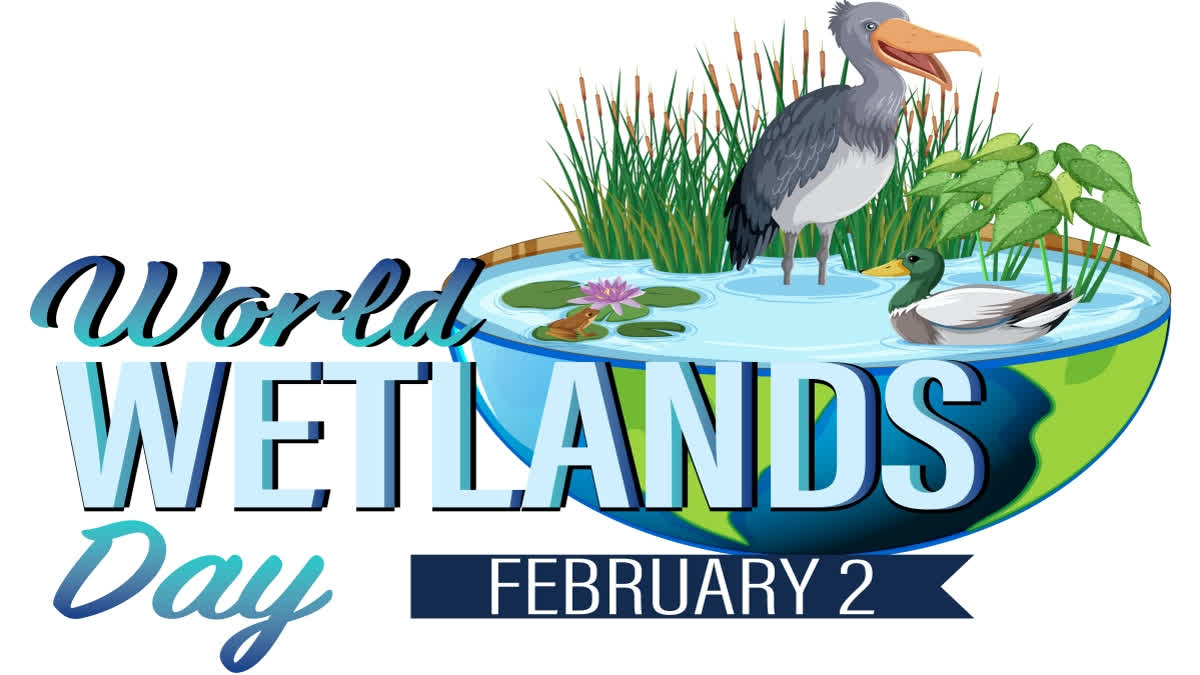Hyderabad: World Wetlands Day, observed on February 2 across the globe urges individuals, organisations, and governments to raise awareness about wetlands.
This date marks the anniversary of the 1971 UN General Assembly Resolution 75/317, which declared February 2 to be “World Wetlands Day”. This Resolution was adopted at Ramsar in Iran on the banks of the Sea of Caspian.
Ramsar Convention- The Ramsar Convention on Wetlands of International Importance Especially as Waterfowl Habitat, also known as the Convention on Wetlands, is an international treaty that provides the framework for national action and international cooperation for the conservation and wise use of wetlands and their resources.
What is a Wetland?- Wetlands are areas where water covers the soil, or is present either at or near the surface of the soil all year or for varying periods of the year, including the growing season.
Categories of Wetlands- Wetlands vary widely because of regional and local differences in soils, topography, climate, hydrology, water chemistry, vegetation and other factors, including human disturbance. Indeed, wetlands are found from the tundra to the tropics and on every continent except Antarctica. Two general categories of wetlands are recognised: coastal or tidal wetlands and inland or non-tidal wetlands.
Coastal/Tidal Wetlands: Coastal/tidal wetlands in the United States, as their name suggests, are found along the Atlantic, Pacific, Alaskan, and Gulf coasts. Coastal wetlands include saltwater and freshwater wetlands located within coastal watersheds.
Inland/Non-tidal Wetlands: Inland/non-tidal wetlands are most common on floodplains along rivers and streams (riparian wetlands), in isolated depressions surrounded by dry land (for example, playas, basins, and "potholes"), along the margins of lakes and ponds, and in other low-lying areas where the groundwater intercepts the soil surface or where precipitation sufficiently saturates the soil.
World Wetlands Day 2024 theme- The theme for the year 2024 has been kept as 'Wetlands and Human Well-being'. This year’s campaign spotlights how interconnected wetlands and human life are — with people drawing sustenance, inspiration, and resilience from these productive ecosystems. Importantly, the theme for 2024 underscores how all aspects of human well-being are tied to the health of the world’s wetlands. It calls on each of us to value and steward our wetlands. Every wetland matters. Every effort counts.
Importance of Wetlands
- Water purification: Filter pollutants and impurities from water.
- Flood control: Absorb and store excess water, reducing the risk of floods.
- Climate change mitigation: Act as carbon sinks, storing carbon dioxide and reducing greenhouse gas emissions.
- Biodiversity hotspots: Provide habitats for a wide range of plants and animals.
- Economic benefits: Support tourism, fisheries, agriculture, and other economic activities.
- Cultural significance: Hold cultural and spiritual importance for many communities around the world.
Wetlands around the world- There are currently over 2,400 Ramsar Sites around the world. The wetlands cover over 2.5 million square kilometres, an area larger than Mexico. The network of Ramsar Sites includes coastal and inland wetlands of all types.
Significance of World Wetlands Day
- Highlighting the benefits of wetlands: The day aims to highlight the diverse benefits that wetlands provide to humans, including flood control, water purification, climate change mitigation, and support for biodiversity.
- Promoting the conservation and wise use of wetlands: The day encourages people to take action to conserve and use wetlands sustainably. It ensures their long-term survival and the benefits they provide for generations to come.
- Raising awareness about threats to wetlands: The day aims to raise awareness about the threats wetlands face, such as pollution, unsustainable land use, and climate change.
- Encouraging action to address wetland threats: The day encourages individuals, communities, and governments to take concrete actions to address threats to wetlands and promote their conservation.



